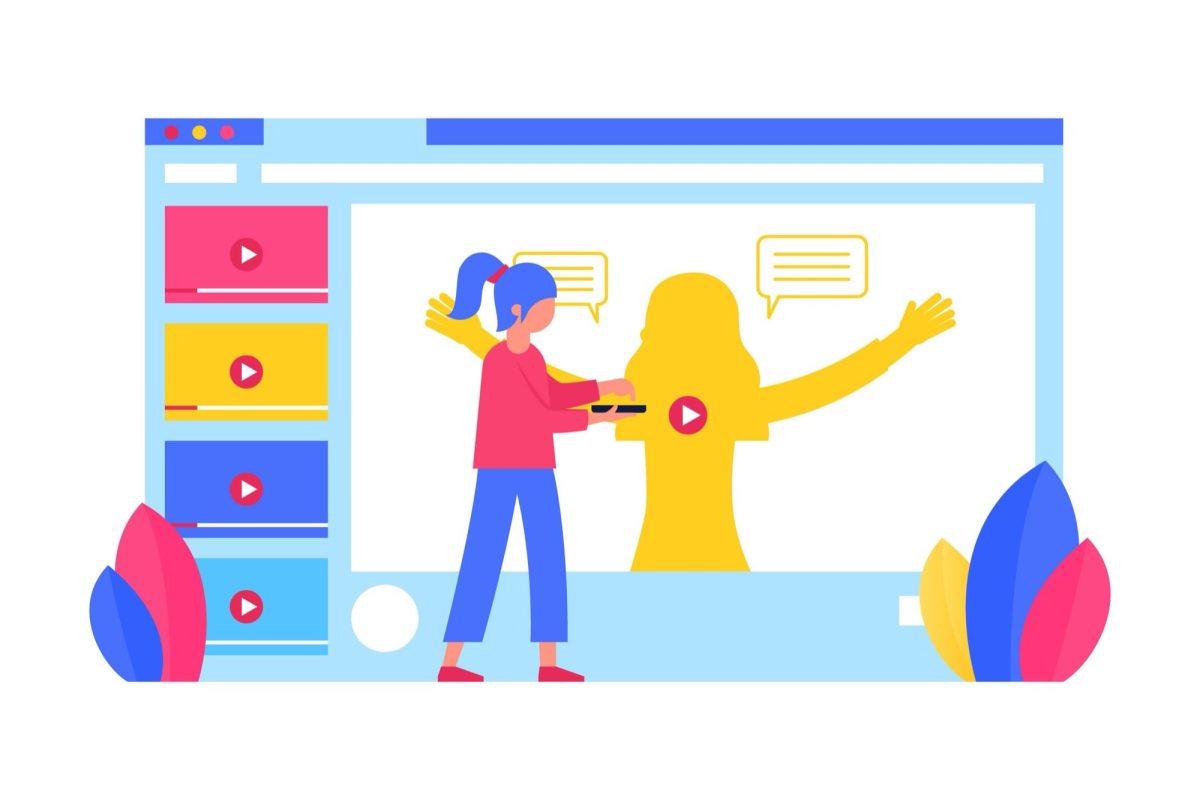Google Ads is a crucial part of PPC (Pay-Per-Click) advertising. It allows businesses to showcase their ads on Google’s search engine results pages and various websites. As the online world keeps changing, mastering Google Ads is becoming more and more important for digital marketers who want to stand out in a crowded space.
There are a few key factors that determine success with Google Ads:
- Certifications: Getting certified by Google Ads shows expertise and helps marketers stay updated with the latest features of the platform.
- Click-through Rate (CTR) Optimization: Improving CTR is essential for better ad performance. This metric indicates how relevant and appealing an ad is, affecting its cost and visibility in Google’s advertising network.
- Budget Management: Properly allocating and managing budgets ensures that campaigns are not only cost-effective but also generate the highest possible return on investment (ROI).
By focusing on these areas in 2023, digital marketers can effectively use Google Ads to grow their campaigns and achieve measurable business results.
Understanding Google Ads
Google Ads is a comprehensive online advertising platform that empowers businesses to reach potential customers through targeted ad placement across Google’s vast network. At its core, Google Ads operates on a pay-per-click (PPC) model, where advertisers bid on keywords and pay for each click on their advertisements.
Google Ads Solutions and Features
Advertisers can choose from a variety of ad formats to connect with audiences:
1. Search ads
These are text-based ads that appear on Google search results pages. When users search for terms related to the keywords selected by advertisers, these ads may be displayed above or below the organic search results, offering high visibility.
2. Display ads
Leveraging a network of over two million websites and apps, display ads enable brands to engage users with visual content like images and banners while they browse the web.
3. Video ads
Run primarily on YouTube, video ads allow businesses to present compelling video content in front of or during YouTube videos, tapping into a massive audience engaged in video consumption.
4. App ads
Designed to drive app installations and engagement, these ads appear across Google’s properties, including the Search Network, Play Store, YouTube, and the Display Network.
5. Shopping ads
E-commerce businesses benefit from shopping ads that showcase products directly within the search results, featuring images, prices, and business names to attract users ready to purchase.
AI-Powered Campaign Optimization
Google Ads leverages artificial intelligence (AI) to enhance campaign performance. Here are some ways AI contributes to optimization:
- Smart Bidding: Using machine learning algorithms, Google Ads offers Smart Bidding strategies such as Target CPA (Cost Per Acquisition), Target ROAS (Return On Ad Spend), and Enhanced CPC (Cost Per Click), helping advertisers automate bid adjustments for optimal conversion value.
- Responsive Ads: AI technology enables creation of responsive search and display ads that automatically test different combinations of headlines and descriptions and learn which combinations perform best.
- Predictive Audience Insights: Google’s AI analyzes patterns in user behavior to help advertisers identify new target segments likely to convert based on their interests and intent.
By understanding these aspects of Google Ads, marketers can harness the power of this sophisticated online advertising platform. With strategic utilization of ad solutions and AI-driven optimization tools at their disposal, advertisers are equipped to refine their campaigns for maximum impact.
2. Mastering Click-through Rate (CTR) for Better Ad Performance
The Significance of Click-through Rate in Measuring Ad Effectiveness
Click-through Rate (CTR) is a vital metric within Google Ads that measures the number of clicks an ad receives divided by the number of times the ad is shown (impressions). CTR indicates user engagement, reflecting the relevance and appeal of an ad to its target audience. A higher CTR means more users found the ad intriguing enough to click on it, thereby increasing the chances for conversions.
Strategies to Improve Click-through Rate in Google Ads Campaigns
Write Compelling Ad Copy that Encourages Clicks
Crafting ad copy that resonates with your audience is paramount. Here are key aspects:
- Highlight Value Proposition: Clearly communicate what sets your product or service apart.
- Include a Clear Call-to-Action (CTA): Urge users to take action with verbs like ‘Buy’, ‘Learn’, ‘Sign Up’.
- Emotionally Connect: Use language that taps into the emotions or pain points of your target market.
- Leverage FOMO: Create a sense of urgency with limited-time offers.
Use Relevant Keywords to Attract the Right Audience
Keywords are the foundation of Google Ads campaigns, connecting user queries to relevant ads. Implement these practices for keyword optimization:
- Research Keywords Thoroughly: Use tools like Google Keyword Planner for insights into search terms used by your audience.
- Match Types Wisely: Balance broad, phrase, and exact match keywords to optimize reach and relevance.
- Negative Keywords: Continuously update negative keywords to prevent irrelevant ad impressions which can dilute CTR.
- Ad Group Segmentation: Create tightly themed ad groups for increased keyword-to-ad relevance.
Implementing these strategies not only enhances CTR but also contributes to the overall health and efficiency of your Google Ads campaigns.
3. Optimizing Budgets for Maximum ROI with Google Ads
Importance of Budget Management in Maximizing Ad ROI
Allocating a marketing budget to Google Ads is an investment with the expectation of profitable returns. The intelligent distribution of funds across campaigns ensures not only the longevity but also the effectiveness of advertising efforts. Budget Optimization plays a critical role in campaign success and overall business profitability. By managing budgets effectively, advertisers can:
- Extend Campaign Lifespan: Prevent running out of budget prematurely, thus maintaining a consistent presence in front of the target audience.
- Enhance Campaign Performance: Allocate more funds to high-performing campaigns or ad groups for increased conversions.
- Test and Learn: Reserve a portion of the budget for experimenting with new ad formats or targeting methods to discover what yields the best results.
Techniques for Effective Budget Optimization in Google Ads
Monitor and Adjust Bids to Control Costs
To optimize spending, continuous monitoring and adjusting of bids are essential. This involves:
- Bid Adjustments: Modify bids based on device performance, location, time of day, and other contextual factors.
- Cost-per-click (CPC) Analysis: Evaluate if the CPC is aligned with the value each click brings to your business and adjust accordingly.
- Automated Bidding Strategies: Utilize Google’s AI-driven bidding options like Target CPA or Maximize Conversions, which automatically adjust bids for optimal results.
Explore Advanced Targeting Options to Improve Ad Relevance and Conversion Rates
Leveraging Google Ads’ sophisticated targeting capabilities can significantly increase ad relevance and conversion rates, ultimately delivering better ROI:
- Demographic Targeting: Refine your audience based on age, gender, income level, and more to reach those most likely to convert.
- Interest-based Targeting: Tap into users’ past online behavior and interests to tailor ads that resonate with their preferences.
- Remarketing Lists: Re-engage users who have previously interacted with your website but did not convert.
- Custom Intent Audiences: Create custom audiences by defining keywords and URLs related to products or services your ideal customer is interested in.
By implementing these techniques within Google Ads Campaigns, businesses harness control over their advertising spend while maximizing opportunities for meaningful engagement with potential customers.
The Synergy Between Google Ads and Digital Marketing Strategy
Integrating Google Ads into a Digital Marketing Strategy is like putting together a puzzle. Each piece, or marketing channel, fits perfectly to create a complete picture of the brand’s online presence. Google Ads plays a crucial role in this puzzle, as it directly impacts lead generation and sales conversions.
Using Google Ads Effectively in a Multi-Channel Strategy
Google Ads is not just a standalone tool; it’s an integral part of a comprehensive digital marketing strategy. Here’s why it’s so powerful:
- Precise Targeting: Google Ads allows you to target specific keywords and user queries on Google Search, ensuring that your ads are seen by potential customers who are actively looking for products or services like yours.
- Valuable Insights: The data you gather from Google Ads can be used to improve other marketing efforts. For example, identifying high-performing keywords in your ads can help shape your SEO content strategy.
- Adaptability: Unlike some other marketing channels that may take time to show results, Google Ads offers flexibility and the ability to quickly adjust your campaigns based on market changes or customer behavior.
Combining Google Ads with SEO for Better Audience Targeting
When you combine Google Ads with SEO practices, you can increase your visibility on search engine result pages (SERPs) and attract both organic and paid traffic. This combination works well for audience targeting through:
- Using the Same Keywords: By aligning your keyword strategy across both channels, you ensure consistent messaging and have a higher chance of capturing different user intents.
- Optimizing Your Content: Analyzing the performance data from your Google Ads campaigns can give you insights into what type of content resonates with your audience. You can then use this information to optimize your website content and meta descriptions, which can potentially improve your organic search rankings.
Expanding Your Reach with Social Media and Google Ads
Integrating your social media efforts with Google Ads can significantly boost your brand visibility. Here’s how it works:
- Reaching Out to Potential Customers: By running ads on both social media platforms and Google, you increase the chances of reaching potential customers who may not be actively searching for your products or services but are interested in them.
- Consistent Messaging: When you use similar targeting options like demographics and interests on both Google Ads and social media platforms, you can create cohesive advertising campaigns that deliver consistent messages to your target audience.
By incorporating Google Ads into your overall digital marketing strategy, you create a holistic approach that utilizes multiple channels. This integration ensures that each channel’s strengths are maximized, leading to improved brand visibility and audience engagement. As we move forward, understanding how these components work together becomes increasingly vital for campaign success.
Conclusion
Staying updated with the changing world of Google Ads is crucial for digital marketers aiming for long-term success. Mastering Google Ads in 2023 requires more than just using its features; it also means continuously learning and adapting to the latest trends and updates on the platform.
Two key areas that can greatly impact the performance of Google Ads campaigns are optimizing the Click-through Rate (CTR) and managing the budget wisely. By focusing on these aspects, marketers can significantly improve their campaign results:
- Click-through Rate (CTR): A well-optimized CTR not only makes ads more effective but also leads to better quality scores, which can potentially reduce the cost per click and improve ad placements.
- Budget Management: Thoughtful allocation of funds and regular adjustments to bidding strategies ensure that campaigns remain cost-effective while maximizing return on investment (ROI).
Looking ahead, PPC advertising is expected to become even more dynamic, with advancements in technology and changes in consumer behavior. This means that digital marketers need to be flexible and willing to embrace new tools and strategies as they emerge, in order to keep their campaigns successful in an ever-evolving digital landscape.
By incorporating these practices into their overall digital marketing strategy, professionals can stay competitive and achieve their desired marketing outcomes. The future of PPC advertising holds great potential for innovation, presenting an exciting challenge for every marketer to grow alongside it.




